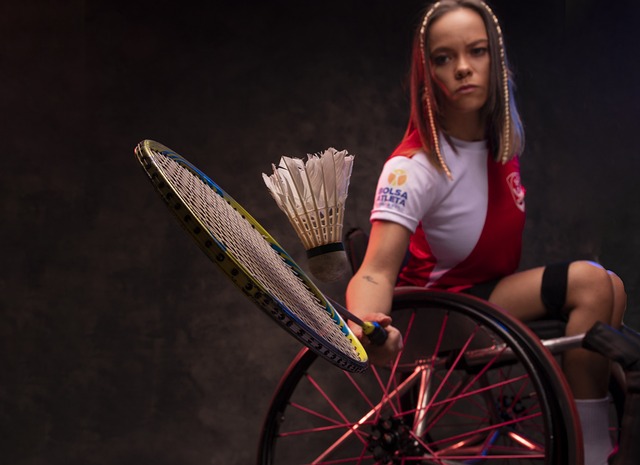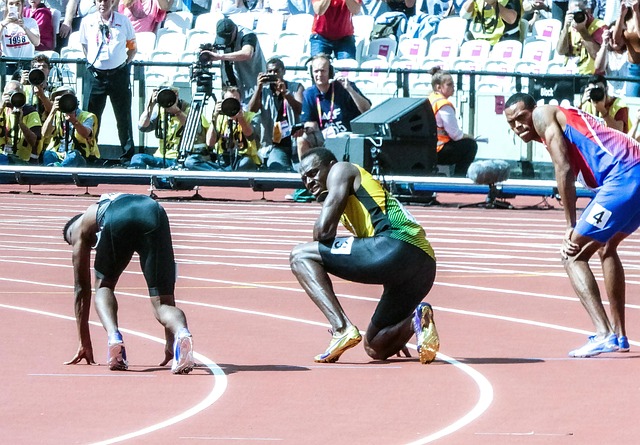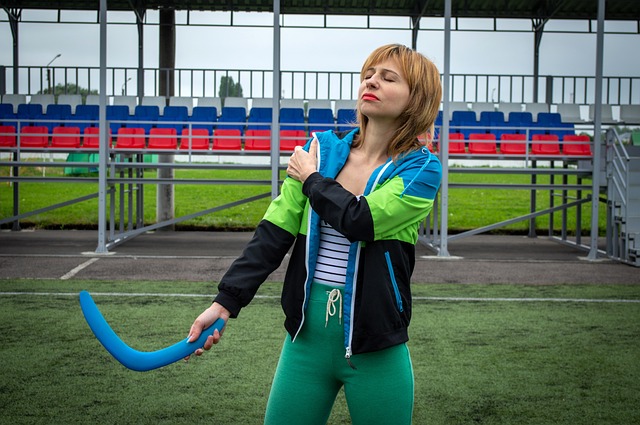Regenerative sports therapy is a cutting-edge approach that utilizes advanced techniques like platelet-rich plasma (PRP) and mesenchymal stem cell (MSC) therapies to accelerate athletic recovery and enhance performance. Unlike traditional methods, it focuses on stimulating the body's natural healing processes, promoting tissue regeneration, reducing inflammation, and improving strength and flexibility without invasive surgeries. This non-invasive therapy is especially beneficial for high-impact sports, helping athletes recover faster from injuries like tendinitis and sprains while maintaining overall joint health. With ongoing research and evolving modalities, regenerative sports therapy offers a promising future for rapid injury relief and optimal athletic performance.
Unleash your body’s potential with the transformative power of regenerative sports therapy. This cutting-edge approach is revolutionizing athletic recovery and performance. Our article delves into the intricate world of regenerative therapies, exploring how they boost strength and flexibility. We dissect common techniques, their diverse applications in sports, and safety considerations. Discover the future of sports medicine as we unravel the benefits and prospects of this game-changing therapy.
- Understanding Regenerative Sports Therapy: An Overview
- How Regenerative Therapies Enhance Strength and Flexibility
- Common Techniques in Regenerative Sports Therapy
- Benefits and Applications Across Different Sports
- Safety, Recovery, and Future Prospects of Regenerative Sports Therapy
Understanding Regenerative Sports Therapy: An Overview

Regenerative sports therapy is a cutting-edge approach that leverages the body’s natural healing mechanisms to enhance athletic performance and recovery. It goes beyond traditional treatment methods by focusing on repairing and regenerating damaged tissues, including muscles, tendons, and ligaments. This innovative therapy uses various techniques such as platelet-rich plasma (PRP), stem cell therapy, and tissue engineering to stimulate the body’s own repair systems.
The key advantage of regenerative sports therapy lies in its ability to promote self-healing while minimizing the need for invasive surgeries or long-term use of medications. By delivering concentrated solutions of growth factors and cells to injured areas, it accelerates the natural healing process, reduces inflammation, and fosters the growth of new, healthy tissue. This not only improves strength and flexibility but also helps athletes return to their active lifestyles faster and safer.
How Regenerative Therapies Enhance Strength and Flexibility

Regenerative therapies, including platelet-rich plasma (PRP) and mesenchymal stem cell (MSC) treatments, are transforming the way athletes and active individuals manage injuries and optimize performance. Unlike traditional methods that solely focus on pain relief or muscle repair, regenerative sports therapy aims to stimulate the body’s inherent healing mechanisms to enhance strength and flexibility.
These therapies work by delivering concentrated amounts of growth factors and cells directly to injured tissues. This stimulates blood vessel formation, encourages tissue regeneration, and promotes the growth of new, healthy muscle and tendon fibers. As a result, athletes experience improved range of motion, reduced inflammation, and accelerated recovery times, ultimately enabling them to return to their peak physical condition faster and safer than ever before.
Common Techniques in Regenerative Sports Therapy

Regenerative sports therapy leverages cutting-edge techniques to accelerate natural healing processes in athletes and active individuals. One of the most common approaches is platelet-rich plasma (PRP) therapy, where a patient’s own blood is used to stimulate tissue repair. PRP contains high concentrations of growth factors that promote cell regeneration, aiding in the recovery of muscles, tendons, and ligaments.
Another popular method is mesenchymal stem cell (MSC) therapy, which involves injecting stem cells derived from bone marrow or adipose tissue into affected areas. MSCs have the remarkable ability to differentiate into various types of cells, such as muscle, tendon, or cartilage, contributing to tissue regeneration and reducing inflammation. Additionally, extracorporeal shock wave therapy (ESWT) is used to stimulate healing by delivering low-energy sound waves to damaged tissues, enhancing blood flow and encouraging cellular repair.
Benefits and Applications Across Different Sports

Regenerative sports therapy offers a wide range of benefits and applications across diverse athletic disciplines. By harnessing the body’s inherent healing abilities, athletes can accelerate recovery times from injuries, reduce inflammation, and enhance overall performance. This non-invasive approach is particularly valuable in high-impact sports like running, where repetitive stress on joints can lead to chronic conditions such as tendinitis or arthritis.
In team sports like basketball or soccer, regenerative therapies can target muscle strains and sprains common among athletes pushing their physical limits. For individual sports such as gymnastics or diving, where flexibility and range of motion are paramount, these treatments can help maintain and improve articular health, allowing athletes to achieve peak performance levels without the limitations imposed by pain or injury. The versatility of regenerative sports therapy makes it a valuable tool for athletes at all levels, from amateur enthusiasts to professional competitors.
Safety, Recovery, and Future Prospects of Regenerative Sports Therapy

Regenerative sports therapy has gained traction due to its potential to enhance strength and flexibility, offering a promising alternative to traditional treatments for athletes and active individuals. One of the key advantages is its safety profile; unlike some surgical interventions, regenerative therapies are minimally invasive, reducing the risk of complications and speeding up recovery times. This makes it an attractive option for those seeking rapid relief from injuries without undergoing extensive procedures.
The recovery process in regenerative sports therapy involves stimulating the body’s natural healing mechanisms. Through techniques like platelet-rich plasma (PRP) or stem cell therapy, damaged tissues are repaired and rejuvenated, leading to improved flexibility and muscle function. As research continues to evolve, the future prospects for this field look bright, with potential advancements in treatment modalities and a deeper understanding of cellular regeneration.
Regenerative sports therapy emerges as a game-changer in athletic recovery and performance enhancement. By harnessing the body’s natural healing mechanisms, this innovative approach offers promising benefits for athletes across various disciplines. Through techniques like platelet-rich plasma (PRP) therapy and mesenchymal stem cell treatments, regenerative sports therapy promotes faster injury repair, improved flexibility, and enhanced overall strength. As research continues to evolve, we can expect even more advanced applications, ensuring safer and quicker recovery times for active individuals. Embracing these cutting-edge therapies could be the key to unlocking new levels of athletic potential.
